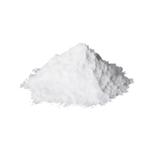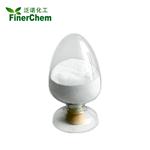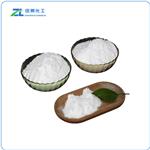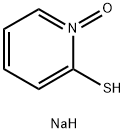Sodium Pyrithione: Versatile Fungicide with Diverse Applications and Safety Considerations
Feb 5,2024
General Description
Sodium Pyrithione is a versatile fungicide commonly found in the form of white powder or liquid, soluble in water and organic solvents. Sodium Pyrithione is stable under neutral or alkaline conditions and exhibits solubility in water, ethanol, and PEG 400. Sodium Pyrithione finds extensive applications in various industries, including home maintenance, industrial processes, and consumer products. It is generally considered safe for use with proper precautions, but potential adverse effects must be taken into account when handling it. Overall, caution should be exercised to ensure that exposure levels are kept within safe limits to minimize the risks associated with its use.

Figure 1. Sodium Pyrithione
Properties in Different Forms and Conditions
Sodium Pyrithione, also known as pyrithione sodium, omadine sodium, pyrithione, or α-mercapto-2-pyridine-N-oxide sodium, is a type of pyridine derivative fungicide. It is commonly found in the form of a white or off-white powder that is easily soluble in water and organic solvents such as ethanol. Typically formulated as a 40% liquid, it appears as a light yellow to brownish-yellow transparent liquid, which is also readily soluble in water. When used under acidic conditions, its effectiveness decreases, but it remains stable under neutral or alkaline conditions. With a melting point of 250°C and a slight characteristic odor, sodium pyrithione exhibits a solubility (by mass fraction) of approximately 53% in water, 19% in ethanol, and 12% in polyethylene glycol 400 (PEG 400). It is best utilized within a pH range of 7 to 10, with a pH value of 8.0 for a 2% aqueous solution. However, it is unstable in the presence of light, oxidizing agents, and strong reducing agents. Additionally, non-ionic surfactants may cause slight deactivation, and it can undergo chelation reactions with heavy metals. 1
Applications in Various Industries
Sodium Pyrithione is a versatile compound that finds extensive applications in various industries, including home maintenance, industrial processes, and consumer products. In home maintenance, it is utilized as a preservative in paints and stains to prevent microbial growth and extend the lifespan of the product. Besides, it serves as a biocide in aqueous functional fluids, such as metalworking, cutting, cooling, and lubricating fluids, to control slime-forming bacteria and fungi. In the manufacturing industry, sodium pyrithione plays a crucial role in latex emulsions, fiber lubricants, and inks, providing effective protection against mold and bacteria. In addition to the above applications, sodium pyrithione is widely used in consumer products, including laundry rinse additives, detergents, carpet cleaners, and analytical and diagnostic reagents. Its broad-spectrum activity and low toxicity make it an ideal ingredient in these products, ensuring high efficiency and safety. However, it should be noted that there is a potential risk of exposure to sodium pyrithione during industrial processes. Hence, proper safety measures and protective equipment must be employed to minimize the risks associated with its use. 2
Safety Considerations for Sodium Pyrithione
Sodium Pyrithione is generally considered safe for use with proper precautions. However, it is important to be aware of its potential adverse effects. It has been identified as a neurotoxin, meaning it can have toxic effects on the central nervous system. Therefore, exposure to high concentrations should be avoided. The Maximum Allowable Concentration for sodium pyrithione is set at 0.2 mg/m3 for the inhalable fraction. This guideline helps ensure that exposure levels are kept within safe limits. In terms of skin sensitization, studies conducted on guinea pigs and humans have shown that sodium pyrithione is not a skin sensitizer. This means it is unlikely to cause allergic reactions on the skin. However, it is worth noting that in a 13-week gavage study on rats, hind-limb atrophy was observed at the highest tested dose of 8 mg/kg/day. This indicates that neurotoxicity may occur at high doses. The lowest observed effect level was determined to be 2 mg/kg/day based on evidence of neurotoxicity. Overall, while sodium pyrithione can be used safely when proper precautions are taken, it is essential to adhere to recommended guidelines and minimize exposure to high concentrations. 3
Reference
1. Pyrithione sodium. National Center for Biotechnology Information (2024). PubChem Compound Summary for CID 23685289.
2. Sodium pyrithione. EPA Chemical and Products Database, CAS 15922-78-8.
3. Sodium omadine. Haz-Map, Information on Hazardous Chemicals and Occupational Diseases, 9472.
- Related articles
- Related Qustion
- Sodium Pyrithione: Toxic Effects, Modes of Action and Mechanism of Action Mar 15, 2023
Sodium pyrithione is used as a broad spectrum biocideespecially against fungi and gram positive and gram negativebacteria in metal-working fluids.
- The prevention or reduction of discoloration of sodium pyrithione Jun 17, 2022
Sodium pyrithione [also called the sodium salt of 1-hydroxy-2-pyridinethione, sodium pyridine-2-thiol-N-oxide, or 2-pyridinethiol-1-oxide, Na salt] is also employed as a preservative in various cosmetics and toiletries.
Sodium allylsulfonate is a reactive polymer surfactant used in textiles and nickel plating, but requires caution due to toxicity risks.....
Feb 5,2024APINobiletin, from citrus fruits, exhibits anti-cancer, anti-inflammatory, and antioxidant properties, making it a promising candidate for combination cancer therapy.....
Feb 5,2024APISodium Pyrithione
3811-73-2You may like
Sodium Pyrithione manufacturers
- Sodium Pyrithione
-

- $10.00 / 1kg
- 2024-05-24
- CAS:3811-73-2
- Min. Order: 1kg
- Purity: 99%
- Supply Ability: 300tons
- 2-Pyridinethiol-1-oxide sodium salt
-

- $0.00 / 25KG
- 2024-05-24
- CAS:3811-73-2
- Min. Order: 1KG
- Purity: ≥99%
- Supply Ability: 500mt/year
- Sodium Pyrithione
-

- $10.00 / 1kg
- 2024-05-10
- CAS:3811-73-2
- Min. Order: 1kg
- Purity: 99%
- Supply Ability: 5000




